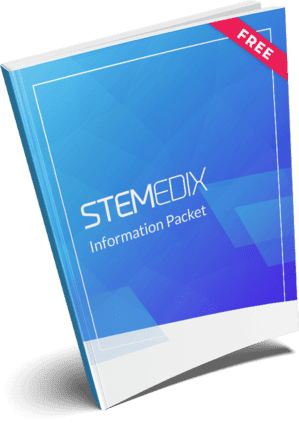
by admin | May 17, 2023 | Stem Cell Therapy, Kidney Disease, Mesenchymal Stem Cells, Stem Cell Research
Ischemic kidney diseases are serious health issues that lead to irreversible loss of kidney function and are commonly associated with high rates of mortality and morbidity. Many of the conditions captured under the term ischemic kidney disease occur as a result of decreased glomerular filtration rate (GFR) caused by vasoconstriction or loss of autoregulation. Ischemic kidney disease, or ischemic renal disease, is a contributing factor anywhere between 6% – 27% of end-stage kidney disease and is most common among patients 50 years old or older.
The progression of these types of kidney diseases is often multifaceted and involves complex hormonal-immunological cellular interactions. Since ischemic kidney disease often involves damage that occurs to many different types of cells, the conditions have often been demonstrated to be resistant to conventional therapy.
Considering mesenchymal stem cells (MSCs) provide renal protection, their anti-inflammatory and immunomodulatory properties are of interest in an effort to better understand how they can be therapeutically used to treat and prevent acute kidney ischemia (AKI).
In this review, Zhu et al. examine recent progress in the use of MSC to prevent kidney diseases, with a specific focus on chronic ischemic kidney disease (CIKD).
When used to treat CIKD, MSCs have been found to achieve renal cellular repair in a number of different ways. Initially, and upon infusion, MSCs home to the injury site and release homing receptors, growth factors, and anti-inflammatory cytokines to the injury site. They also release similar microparticles that promote kidney repair through internalization in other cells, allowing for reduced intrarenal inflammation and the promotion of vascular regeneration.
Examining the results of clinical trials exploring the use of MSC to treat CIKD, and considering patients with diabetes mellitus often develop chronic kidney issues, including diabetic nephropathy (DN), the authors believe the beneficial application of the anti-inflammatory, antioxidant, and immunomodulating features of MSC could help in the treatment of DN.
While Zhu et al. highlights the potential of MSCs in the treatment of CIKD in this review, they also identify potential limitations, including the potential for MSCs to form teratoma or other tumors (to date, no direct evidence of kidney tumor formation has been reported) and exactly how long the effects of MSC on kidney protection will last. As a way to address both potential limitations, the authors recommend longer follow-up times to ensure all potential detrimental effects of MSC use in humans are known and accounted for.
The review concludes that while further studies are needed to discern the chief elements of their actions and to define the optimal type (tissue source, preconditioning), dose, and delivery route, MSCs demonstrate remarkable potential for future treatment of ischemic kidney disease.
Source: “Concise Review: Mesenchymal Stem Cell Treatment for Ischemic ….” https://www.ncbi.nlm.nih.gov/pmc/articles/PMC3795813/.

by admin | May 10, 2023 | Stem Cell Therapy, Mesenchymal Stem Cells, Multiple Sclerosis, Stem Cell Research
Multiple sclerosis (MS) is a progressive disease of the central nervous system (CNS) that occurs as a result of the body’s immune system attacking the protective sheath, or myelin, responsible for covering nerve fibers. Characterized by progressive nerve deterioration and damage of the nerve fibers, MS is currently estimated to affect nearly 600,000 adults in the United States.
While a specific cause of MS has not yet been determined, recent findings have suggested interactions between environmental and genetic factors as contributors to the susceptibility to MS.
Current pharmaceutical treatments for MS have demonstrated the ability to slow symptoms associated with MS but have not demonstrated the ability to treat or prevent the disease itself.
Recent studies have identified mesenchymal stem cells (MSCs) as having anti-inflammatory properties that could potentially be an effective therapy option for preventing or managing overactivity and self-antigen attacks by T cells and macrophages that are commonly associated with MS.
As part of this review, Alanazi et al. examined the most relevant clinical trials that utilized MSCs from a variety of sources as part of their investigation into the effectiveness of these stem cells as a potential therapy for MS.
MSCs are able to be easily isolated from multiple sources of the human body, including bone marrow, adipose tissue, umbilical cord, and the placenta. These stem cells have also demonstrated the ability to be expanded in culture media and to be safely utilized as autologous treatment without the risk of rejection.
Regardless of their source, MSCs, in general, have been demonstrated to be highly proliferative, capable of self-renewal, and have immunomodulatory and neurodegenerative effects. In addition, MSCs demonstrate the ability to differentiate and secrete anti-inflammatory factors that allow them to control the progress of autoimmune diseases, including MS.
After examining numerous clinical trials utilizing MSCs from a range of sources, the authors conclude that MSCs – regardless of their source – will all work on inhibiting CD4+ and CD8+ T cell activation, T regulatory cells (Tregs), and macrophage switch into the auto-immune phenotype.
While there are many good sources of MSCs, Alanazi et al. also conclude that previously conducted clinical trials demonstrate umbilical cord MSCs (UCMSCs) to be the best option for the management of Multiple Sclerosis for several reasons. These reasons include faster self-renewal than other MSCs, the ability to differentiate into three germ layers, and the observed ability to accumulate in damaged tissue or inflamed areas.
Additionally, and besides being one of the few MSC sources without ethical concerns, UCMSCs offer benefits from a practical standpoint The separation of MSCs from the umbilical cord is easy and painless, the number of cells collected per unit is high, UCMSC transfusion is not expensive, and UCMSCs have been shown to be very safe to use in this application.
Considering the information presented in this review, Alanazi et al. recommend the clinical use of UCMSCs for regenerative medicine and immunotherapy.
Source: “Mesenchymal stem cell therapy: A review of clinical trials for multiple ….” 23 Aug. 2022, https://pubmed.ncbi.nlm.nih.gov/36092509/.

by admin | May 3, 2023 | Stem Cell Therapy, COPD, Mesenchymal Stem Cells, Stem Cell Research, Umbilical Stem Cell
Chronic obstructive pulmonary disease (COPD) is an incurable and debilitating disease characterized by chronic and progressive inflammation that leads to small airway obstruction and emphysema.
According to the World Health Organization, COPD is the third leading cause of death and is responsible for an estimated 3.2 million deaths each year. Between 80 and 90% of all COPD cases are caused by exposure to cigarette smoke, meaning it is also one of the most preventable diseases.
In addition to the increased risk of death, COPD significantly affects the overall quality of life and is often associated with difficulty breathing, chronic cough, lack of energy, lung infections, lung cancer, and heart disease.
A number of stem-cell-based approaches to address this issue are currently being explored. In this study, Ridzuan et al. uses an animal model to assess the potential anti-inflammatory effects of human umbilical cord mesenchymal stem cell (hUC-MSC)-derived extracellular vesicles (EVs) in cases of COPD.
EVs are small membrane vesicles of multivesicular bodies that are released by a variety of cells, including MSCs. Studies have demonstrated EVs isolated from MSCs mimic the therapeutic effects of MSCs.
Over the course of this study, and to mimic the symptoms observed with COPD, rats were exposed to cigarette smoke for up to 12 weeks, followed by transplantation of hUC-MSCs or application of hUC-MSC-derived EVs.
At the conclusion of this study, Ridzuan et al. found that both the transplantation of hUC-MSCs and the application of hUC-MSC-derived EVs reduced peribronchial and perivascular inflammation, slowed alveolar septal thickening, and decreased the number of goblet cells. Both applications also improved the loss of alveolar septa in the lung of COPD rats and regulated multiple pathways commonly associated with COPD.
Ridzuan et al. conclude that hUC-MSC-derived EVs effectively reduce COPD-induced inflammation and could have the potential to be a therapy for the management of COPD.
The authors also concluded that the selected treatment methods decreased the above-described symptoms at comparable rates. While there are still limited data demonstrating the regenerative and the anti-inflammatory effects of MSC-EVs to mitigate the inflammation in COPD, further study is needed to fully understand the anti-inflammatory effects of MSC-EVs and to better understand the specific mechanisms of action of all contents of MSC-EVs as they relate to the potential future treatment of COPD.
Source: “Human umbilical cord mesenchymal stem cell-derived extracellular ….” 12 Jan. 2021, https://stemcellres.biomedcentral.com/articles/10.1186/s13287-020-02088-6.

by admin | Apr 5, 2023 | Mesenchymal Stem Cells, Stem Cell Research
Cigarette smoking continues to be the leading contributor to preventable disease and death in the United States, including cancer, heart disease, stroke, lung diseases, diabetes, and chronic obstructive pulmonary disease (COPD). Smoking cigarettes also increases the risk of tuberculosis, certain eye diseases, chronic pain, and problems of the immune system, including rheumatoid arthritis.
An abundance of clinical research has clearly shown the detrimental effects cigarette smoke has on nearly every area of the body. However, while assumed to be equally dangerous in its effect on stem cells, there is surprisingly little research exploring the negative implications of cigarette smoking on stem cells.
In this review, Nguyen et al. share findings of recent studies on the effects of cigarette smoking and nicotine on mesenchymal stem cells (MSCs), with a specific focus on dental stem cells.
With their ability to self-renew, develop into specialized cell types, and migrate to potential sites of injury, stem cells have demonstrated the potential to build every tissue in the body and have also demonstrated great potential for tissue regeneration and associated therapeutic uses.
As the potential benefits and weaknesses of stem cells continue to be discovered, researchers have found that cigarette smoking negatively impacts the abilities of stem cells while also limiting stem cell viability for transplantation and regeneration.
While there has been a recent decline in the percentage of U.S. adults who smoke, over 34 million U.S. adults continue to be regular cigarette smokers. Interestingly, research has demonstrated the concentration of nicotine to be significantly higher in saliva than in blood plasma following nicotine administration via cigarette, e-cigarette, and nicotine patch – in some cases measuring up to eight times higher concentrations. Considering this research, and considering the established detrimental effects of e-cigarette vapor – and presumably nicotine – on teeth and dental implants, the authors of this review hypothesized that there would be a similar effect when dental stem cells are exposed to cigarette smoke.
Reviewing the effect that cigarette smoke has on MSCs, the authors found that exposing MSCs to cigarette smoke extract (CSE) and nicotine impaired cell migration, increased early and late osteogenic differentiation markers, decreased cell proliferation, and significantly inhibited the ability of MSCs to differentiate to other types of cells.
Nguyen et al. reviewed research that determined cigarette smoke produced a negative impact on the proliferation and differentiation of dental pulp stem cells (DPSCs). Specifically, this research demonstrated a significantly higher depression of alkaline phosphatase (ALP) and osteocalcin (OC) genes in smokers when compared to nonsmokers. Additional studies found that smokers demonstrated reduced calcium deposition levels and production of ALP when compared to nonsmokers.
Cigarette smoke and nicotine were also found to negatively affect the migration capability of dental stem cells, slowing the migration rate by up to 12% in smokers while also producing a smaller reduction of scratch wound areas when compared to nonsmokers.
While there are not many studies directly comparing the effects of cigarette smoke and nicotine on MSCs and dental stem cells, the authors conclude that dental stem cells exhibit similar characteristics to bone marrow MSCs and that both of these types of stem cells demonstrate similar negative responses upon their exposure to nicotine.
While the authors call for further research to better understand the specific effects of cigarette smoke on dental stem cells, the authors conclude that the findings demonstrating similar responses to cigarette smoke and nicotine between dental stem cells and MSCs can be used to inform future dental stem cell studies. These findings will help dentists better identify which patients might be at an increased risk of poor healing in the oral cavity and if smoking cessation should be considered before undergoing any invasive or traumatic dental procedure, such as tooth extraction.
Source: Comparison of the effect of cigarette smoke on mesenchymal stem ….” https://journals.physiology.org/doi/10.1152/ajpcell.00217.2020.

by admin | Mar 29, 2023 | Spinal Cord Injury, Mesenchymal Stem Cells, Regenerative Medicine, Stem Cell Research, Stem Cell Therapy
The National Institute of Health estimates that nearly 250,000 people in the United States are currently living with a spinal cord injury (SCI). Most often a result of an accident, SCIs typically result in the loss of neurons and axonal damage resulting in the loss of function.
SCIs can be divided into two distinct phases, the initial physical injury and the secondary injury which typically occurs hours to days later. In most cases of SCI, damage to the axonal and tissue damage is caused by compression and/or contusion to the spinal cord. The secondary SCI injury occurs in the hours and days after the initial injury and is characterized by persistent inflammation, glial scar formation, demyelination of surrounding neurons, and death of cells. Over time, research has demonstrated that, in all aspects of secondary injury, the inflammatory response is the major cause and leads to widespread cell damage and lesion expansion.
Recent research has demonstrated that stem cells, including mesenchymal stem cells (MSCs), neural stem/progenitor, and embryonic stem cells, possess anti-inflammatory properties and promote functional recovery after SCI by inducing macrophages M1/M2 phenotype transformation.
In this review, Cheng and He discuss the general feature of macrophages in response to SCI, the phenotype, and function of macrophages in SCI, and the effects of stem cells on macrophage polarization and its role in stem cell-based therapies for SCI.
Macrophages accumulate in and around an SCI and play a very important role in neuroinflammation. Considering that recent research demonstrates the different, but important, contributions M1 and M2 macrophages make toward repairing tissue damage, this process is thought to be a promising therapeutic treatment for controlling the inflammation occurring after initial SCI.
According to this review, there are both positive and negative effects of macrophages on tissue repair and regeneration after an SCI. Interestingly, some studies show that infiltrating macrophages has harmful effects, especially in the early stages of an SCI. On the other hand, studies also indicated that macrophages have beneficial effects on tissue repair. These results included findings indicating that activated macrophages could provide a beneficial microenvironment that is good for the regeneration of sensory axons.
While the exact reason for the opposite effects of macrophages on the pathological process of SCI is not yet known, it’s thought to be because of the different phenotypes of macrophages – M1 (classical activation) and M2 (alternative activation).
Additionally, studies have demonstrated that M2 macrophages are important for efficient remyelination after CNS injury, while M1 macrophages hinder neurogenesis and inhibit neurite outgrowth and induce growth cone collapse of cortical neurons.
Considering these findings, the authors point out that polarization of macrophages to M2 is beneficial – and often preferred to M1- to facilitate the recovery after SCI. These findings have also demonstrated stem cell transplantation to hold tremendous potential for therapeutic uses in the treatment/recovery after SCI.
There is accumulating evidence indicating that the current preference of M2 macrophages compared to M1 macrophages correlates with remission of SCI in cases receiving SCI interventions including anti-inflammatory therapies and stem cells. The authors of this review conclude that while the exact process by which stem cells regulate macrophage polarization has yet to be determined, stem cells can alter macrophage polarization and promote functional recovery postinjury.
Source: “Anti-inflammatory effect of stem cells against spinal cord injury via | JN.” 13 Feb. 2017, https://www.dovepress.com/anti-inflammatory-effect-of-stem-cells-against-spinal-cord-injury-via–peer-reviewed-fulltext-article-JN.

by admin | Mar 22, 2023 | Stem Cell Research, Mesenchymal Stem Cells, Stem Cell Therapy
Currently, it’s estimated that over 1.3 million people in the U.S., and 10 million people around the world, are living with inflammatory bowel disease (IBD). IBD is a chronic and recurrent disease characterized by inflammation of the tissues of the digestive tract[1]. Two specific diseases included under the term IBD include Crohn’s disease (CD) and ulcerative colitis (UC).
While the exact cause of IBD has yet to be determined, research seems to suggest abnormal activation of the immune system, genetic susceptibility, and altered intestinal flora resulting from mucus barrier defects play some type of role in the pathogenesis of this disease. Currently, a complete IBD treatment or cure exists. Recent research has also demonstrated that adults with IBD are more likely to suffer from other chronic conditions, including diabetes, arthritis, lung cancer, and heart disease[2].
Clinical trials using stem cell therapy have demonstrated promising results for the potential treatment of IBD, including long-term remission in some patients.
In this review, Zhang et al. review the upcoming stem cell transplantation methods for clinical application and the results of ongoing clinical trials exploring the use of stem cell transplantation as a potential treatment for IBD.
Specific stem cells, known as hematopoietic stem cells (HSC), have been shown to be particularly effective when used as a therapeutic treatment. HSCs are isolated from blood, bone marrow, and cord blood that migrate directly to damaged mucosal tissues. Initially used in patients with IBD because of other hematologic indications, including leukemia and non-Hodgkin’s lymphoma, the use of HSC therapy (HSCT) demonstrated improvement in intestinal lesions. Further study using HSCT showed that some patients with UC and CD demonstrated sustained clinical and endoscopic improvement. The authors point out that while these limited clinical trials have demonstrated promising results, the observed risk of relapse currently prevents HSCT from being classified as an effective treatment and calls for larger samples and longer-term efficacy observations.
Another stem cell treatment currently being evaluated for the treatment of IBD is the use of mesenchymal stem cells (MSCs). When injected intravenously, MSCs demonstrate the ability to reach the injured area of the intestine, colonize mucosa to control inflammation, improve microcirculation, and repair damaged tissues. A systematic review conducted by Lalu et al. found that the use of MSCs did not show significant side effects and was a relatively safe therapeutic treatment option.
Zhang et al. conclude that the significant advance in stem cell research made over the past twenty years has made them a promising therapeutic option for the treatment of IBD. Although a limited number of clinical trials have confirmed the efficacy of specific stem cells, specifically HSC and MSCs in IBD, the authors point out that the current treatments need to be improved and further research must be conducted in order to fully understand the complexity associated with the condition.
While this review focuses primarily on the use of HSC and MSC, Zhang et al. call for continued preclinical exploration of other cell therapy methods with the goal of improving the quality of life of IBD patients.
Source: “Stem Cell-Based Therapies for Inflammatory Bowel Disease – PMC.” 31 Jul. 2022, https://www.ncbi.nlm.nih.gov/pmc/articles/PMC9368934/.
[1] “Inflammatory bowel disease (IBD) – Symptoms and causes.” https://www.mayoclinic.org/diseases-conditions/inflammatory-bowel-disease/symptoms-causes/syc-20353315.
[2] “People with IBD Have More Chronic Diseases – CDC.” https://www.cdc.gov/ibd/features/IBD-more-chronic-diseases.html.







 St. Petersburg, Florida
St. Petersburg, Florida
